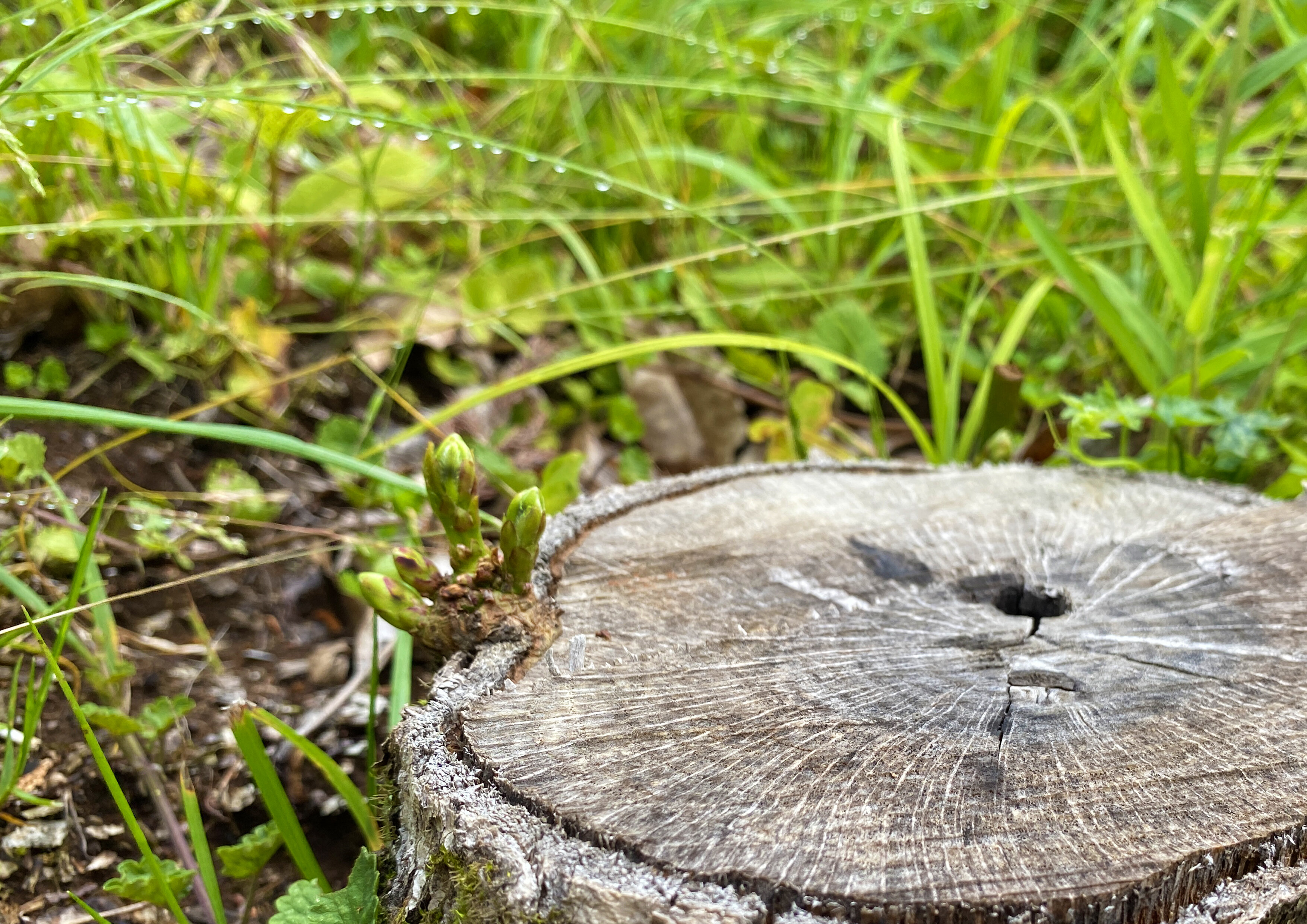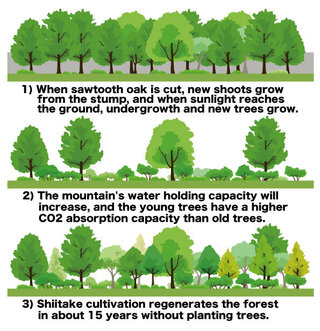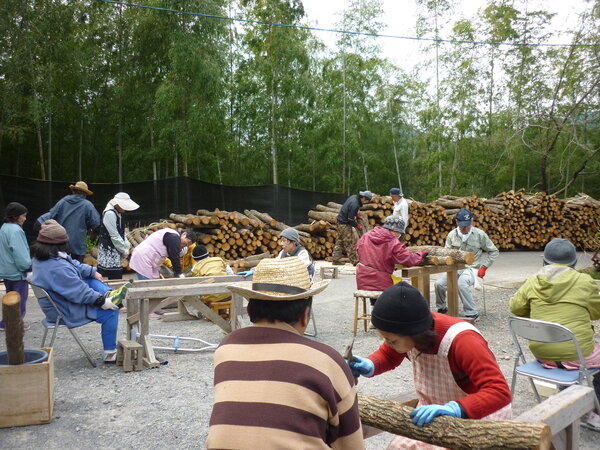Sustainability Initiatives

Tag: #Shitake #Sustainability #regenerate #CO2
We won the Japanese Government's Sustainability Award for the second year in a row!
MAFF Sustainability Award 2020 Grand Prize
MAFF Sustainability Award 2021 Green Food System Promotion Award
Please look at JETRO's easy-to-understand video of our sustainable efforts, including mountain circulation and community help.
Shiitake cultivation regenerates the mountain
Shiitake cultivation leads forests from mere sustainability to regeneration.
When sawtooth oak trees are cut down, the forest ground is bathed in sunlight, and new shoots sprout from sawtooth oak stumps, allowing undergrowth and new trees to grow.
Thus, the mountain's ability to hold water and prevent soil runoff increases.
Young, growing trees also absorb more CO2 than older trees.
Shiitake cultivation regenerates the mountain in about 15 years without planting trees.
Fairtrade for SDGs
The Japanese Government recognized our fair trade and standards practices with special welfare facilities as a leading example for the UN-led SDGs. The Japanese Forest Agency of MAFF shared our fair trade approach with a local special welfare facility in their SDGs Annual Report 2019. (Link to Forest Agency's Japanese post)
Cutting down sawtooth oak trees allows sunlight to penetrate that part of the forest and allows the underbrush to grow.
Trees and plants temporarily store water when it rains with regular human assistance, increasing the mountain's ability to retain moisture and prevent sediment runoff.
Another sprout emerges from the sawtooth oak's stump, and the mountain renews itself and cycles in a cycle of about 15 years.
The oldest record of Shiitake harvesting in Japan is from 1614 in Takachiho-go. (Read more)
However, we know that acorns were the staple food of the Jomon period. The sawtooth oak has been growing thickly for 10,000 years, and shiitake mushrooms would have grown on fallen trees.
Shiitake mushrooms are native to Southeast Asia, and their spores seem to have flown in on the jet stream, growing wild and spreading in Takachiho-go at the foot of Mt. Sobo.
We will carry on this long and storied history of Shiitake eating culture for future generations.
Cuisines worldwide can be made more delicious by using dried Shiitake. (Read more)



